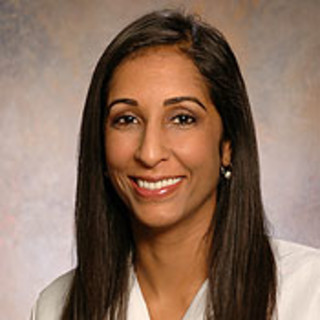The American College of Rheumatology (ACR) Annual Meeting, like many meetings this year, was held virtually. I truly look forward to this conference every year. The energy, sense of community, and the excitement about rheumatology is palpable and it is impossible to not feel inundated with inspiration and a sense of camaraderie. Needless to say, I was not surprised when the ACR announced that this year’s meeting was transitioning to a completely virtual platform. I did feel a nagging sense of disappointment, while being fully aware that it was the right decision given the ongoing pandemic, which is now unfortunately heading into the feared “second wave.”
This year’s meeting was supposed to take place in Washington, D.C. from November 6th-11th, right after one of the most divisive and tense presidential elections in history. While it would have been a landmark experience to be in the capital when the results of the presidential election were announced, I cannot begin to imagine how I would have absorbed high-stakes, high-energy politics at the same time I was attending a high-stakes, high-energy meeting. It would likely have felt like a pressure cooker.
Despite the virtual format, attendance was higher than usual, with 16,400 attendees, 700 speakers, and more than 1,200 posters. The platform was easy to navigate (with only minor audiovisual glitches), the chat function was very active, and Twitter was full steam ahead with conference updates. Notably, this year’s agenda was slightly truncated. The scientific sessions were pre-recorded, followed by live discussions. Recordings and slides were made available to attendees to review after the sessions were over. As a speaker, I thrive on audience engagement and participation, so pre-recording “live” sessions did not feel exciting or inspiring. That said, the virtual format allowed for many more voices to be heard than in previous meetings. It gave a voice to those who tend to shy away from having to walk up to a microphone in a huge conference hall before asking a question to the speaker.
The virtual “poster hall” was another concept I was hesitant about. Presenting a poster gives trainees an opportunity to showcase their accomplishments and network with colleagues, in addition to fostering research collaborations. The ACR did a fantastic job of pre-recording videos that explained the poster content. It was easier to find a poster of interest efficiently without physically wandering the poster hall, and attendees could engage with the presenter using the chat function. This went remarkably well, but for those contemplating entering the field of rheumatology, nothing can replace the face-to-face interaction and feedback that occurs while standing in front of your poster and discussing your findings. Seeing others with similar interests standing to either side of you for what feels like miles in each direction is an exhilarating introduction to the rheumatology community.
Full disclosure: in the past couple of years I have spent the majority of my time at this conference attending other meetings and socializing. While I truly miss having the opportunity to chat with and hug my colleagues in the conference center hallways, or discuss invigorating ideas and life over dinner, I was actually able to watch more sessions than in prior years. The availability of slide decks and the option to watch recorded sessions at my convenience was a definite benefit of the virtual platform. However, doing this while seated on the barstool in my kitchen made it too convenient to wash dishes, start dinner, check on the status of the election, and the millions of other tasks and life errands that come up when you are not on the “conference island.” The immersive experience that is the Annual Meeting is undoubtedly watered down by the lack of physical interaction with the science, speakers, cutting edge discoveries, and energy of the live meeting.
The conference started with a clinical and basic science year in review, which highlighted some of the amazing discoveries that have happened in rheumatology in the past year, both despite and in response to the COVID-19 pandemic. It was incredible to see the progress that has been made, the strength and resilience of the rheumatology community, and the innovations and findings that will continuously enhance the care we are able to offer our patients. Myself, along with 16,000 peers, challenged the virtual platform as we simultaneously logged in to watch the timely presentation by ACR master Dr. Tony Fauci. Early in his career, he advanced our field with his role in defining the use of cyclophosphamide for the treatment of granulomatosis with polyangiitis. Today, he is leading the medical society and country in what is proving to be an extremely challenging and long battle with the COVID-19 pandemic. Throughout the conference, I felt a constant tension as I heard about advances in the field while simultaneously being acutely aware of rapidly increasing COVID-19 cases as numbers climbed across the world, not to mention the painfully slow trickle as votes were counted across the U.S.
The organizers of this year’s ACR annual conference did a tremendous job creating an accessible, informative, and engaging virtual meeting in response to the forces of the pandemic. I believe that moving forward, there will likely be a virtual component to many of our conferences, but there are critical pieces to a live meeting that cannot be replicated virtually. Ideally, we will leverage technology in the virtual space to add value and widen the reach and impact of our educational conferences in the future. We need to continuously innovate, to find ways to connect with our rheumatology peers, engage different types of learners, and allow for interactive experiences that build community and a deeper understanding of the educational content. In parallel to the notion that telemedicine should not replace in-person care but should complement it, virtual engagement will ideally complement educational conferences in years to come. While the virtual meeting was a success, I truly look forward to seeing my rheumatology colleagues in person as soon as it is safe.
Anisha Dua is an Associate Professor of Medicine in the Division of Rheumatology, Director of the Northwestern Vasculitis Center and Director of the Rheumatology Fellowship Program at Northwestern Medicine. She is on the Board of Directors for the Vasculitis foundation and a member of the Scientific Advisory Council for the Rheumatology Research Foundation. She has served in leadership capacities both locally and nationally through the American College of Rheumatology, the Vasculitis Foundation, and the ACGME in the areas of education as well as vasculitis. Follow her on Twitter @anisha_dua.







